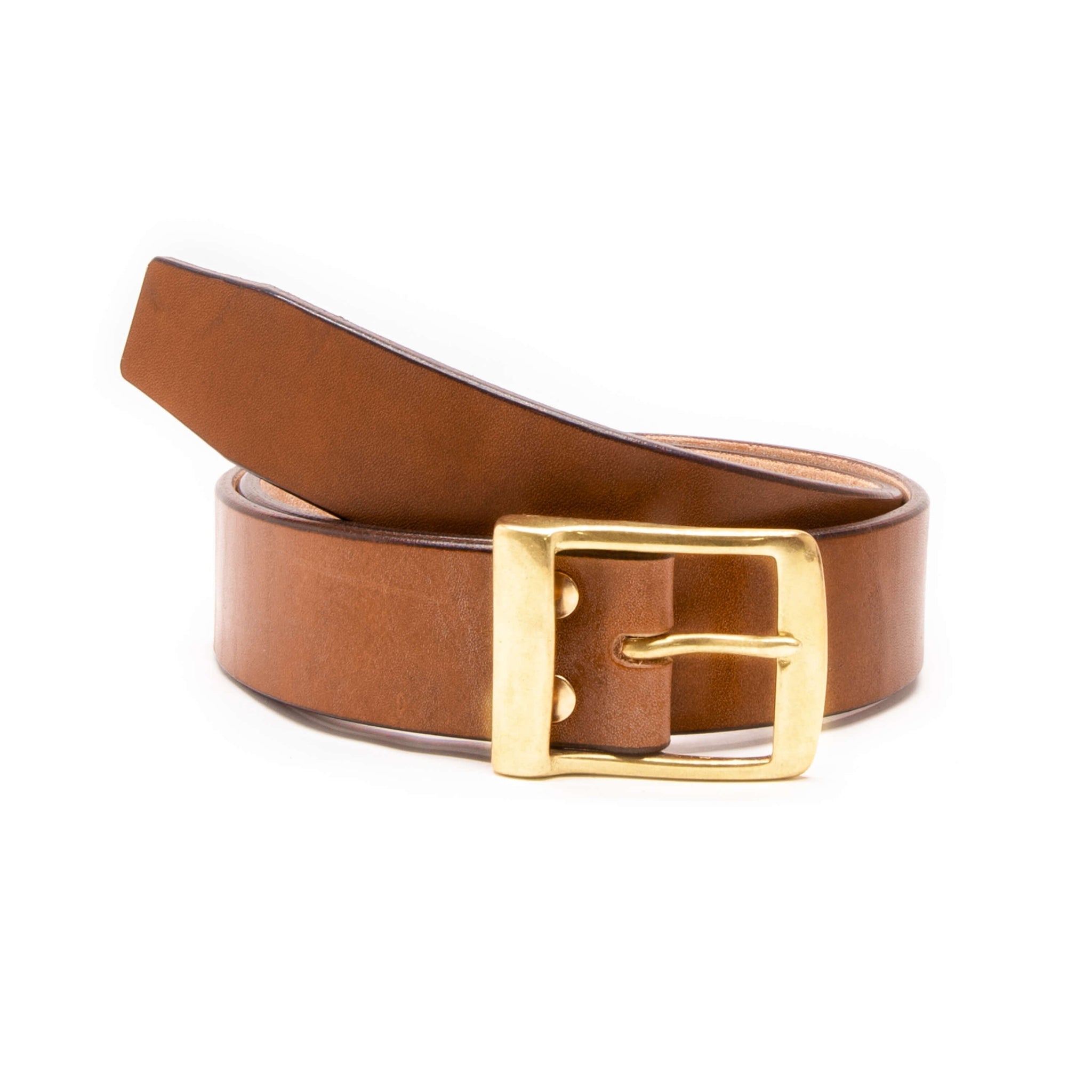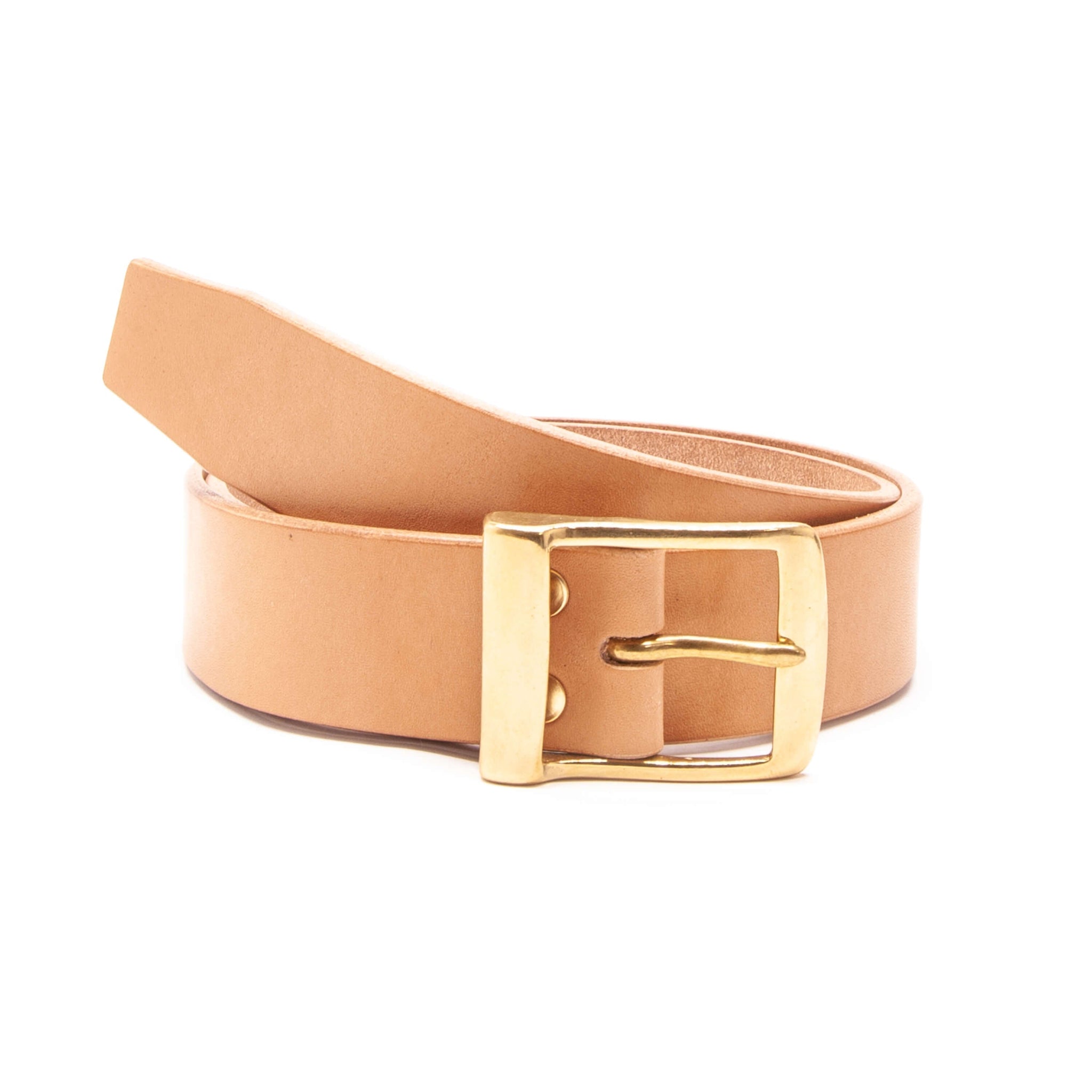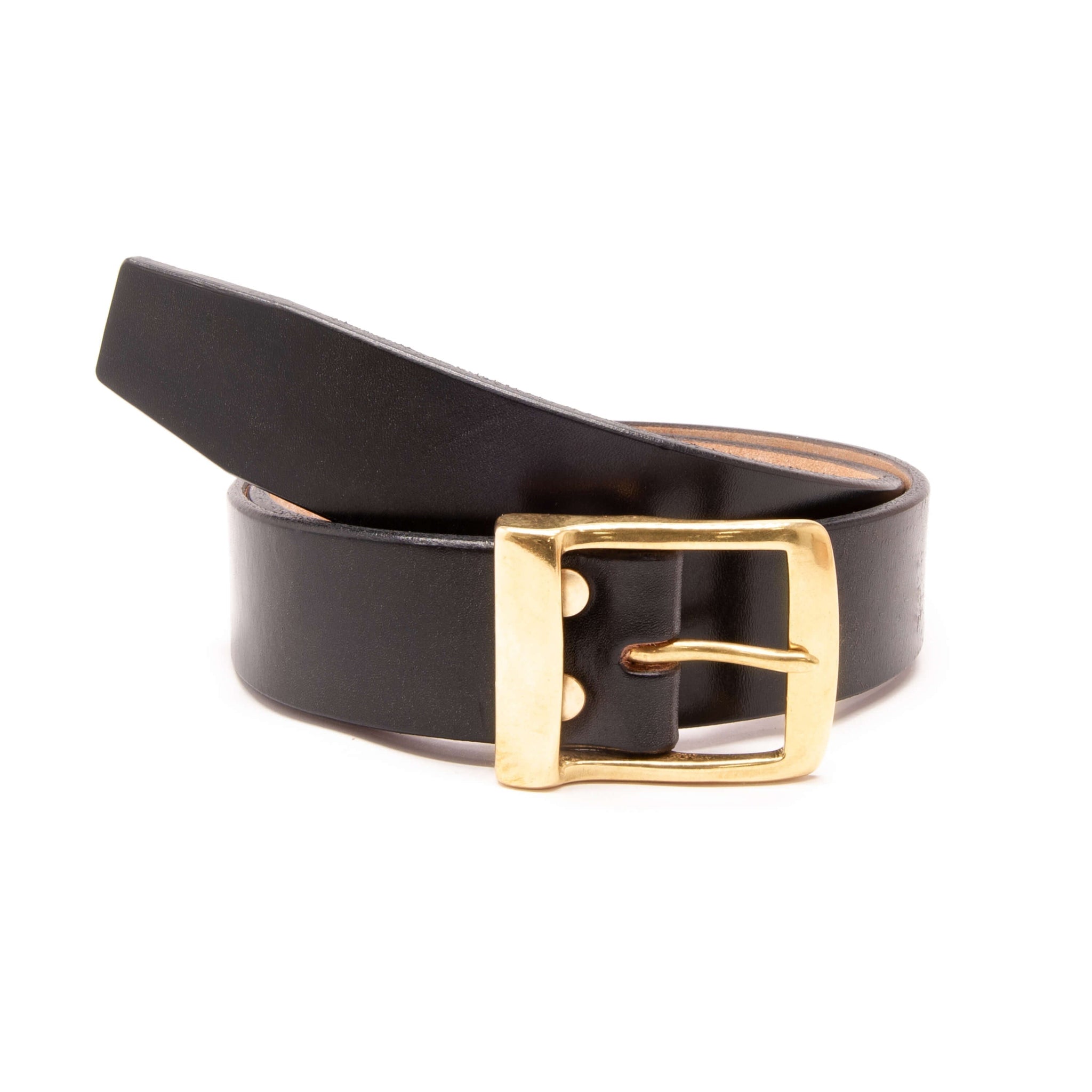FINDING YOUR SIZE
Measure an existing belt as shown in the diagram below

To get the right size measure an existing belt from the point where the leather meets the buckle to the most regularly used hole. This is the measured size.
If this information is not available tell us the trouser size
Each belt has 5 holes 1” (2.5cm) apart. Your supplied measurement will be to the centre one of the five.
HAND-MADE IN DEVON
We make these belts in our leather workshop in rural South Devon using leather from a local tannery, the last of its kind in Europe.
The buckles are cast in sand in a foundry in Walsall, West Midlands.
The belts are made entirely by hand from cutting the strap from the hide to the shaping of the point which we make using a traditional saddlers round knife.
UNIQUELY CRAFTED
The leather has a full grain finish which means that every blemish or scar on the cows skin will be present on the finished hide and apparent on the finished product. The hides are dyed by hand at the tannery with an aniline dye. This process allows the grain and all the individual markings on the cows skin to show through. The dye is absorbed into the hide in an irregular way so giving a unique appearance to every belt. No two are the same.
Read more about our leather.
Natural leather needs feeding from time to time (more often in a dry hot environment). Apply a lavish dose of Tanner Bates Hide Food every 6 months to ensure long and supple service. A complimentary tub of Hide Food is supplied with every belt.
Our buckles are hand-made for us by a foundry in Walsall, UK.
FREE PERSONALISATION
Complimentary personalisation of up to 12 characters is available. We use traditional bookbinders brass type (24pt Gill Sans) embossed on the reverse of the belt (hidden on the inside). The hot stamping process allows you to choose between gold, silver, black and blind (no colour) embossing. The personalisation will follow the same orientation as our maker's marque.
Please note, personalised items cannot be exchanged or returned.
LOVE YOUR LEATHER
Our leather is ethically and sustainably processed. The tannery uses a mixture of tree barks to transform the animal hides to leather. This is an ancient tradition which yields the familiar leather smell. Natural oils evaporate over time and need replenishing. Your leather benefits from and will look its very best if given an occasional dose of natural waxes and oils.



